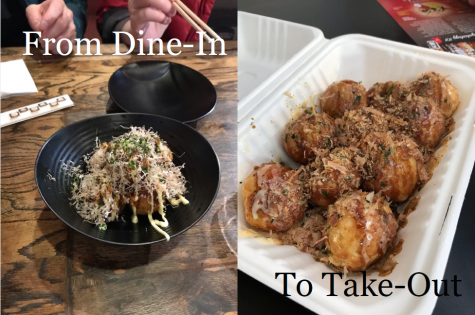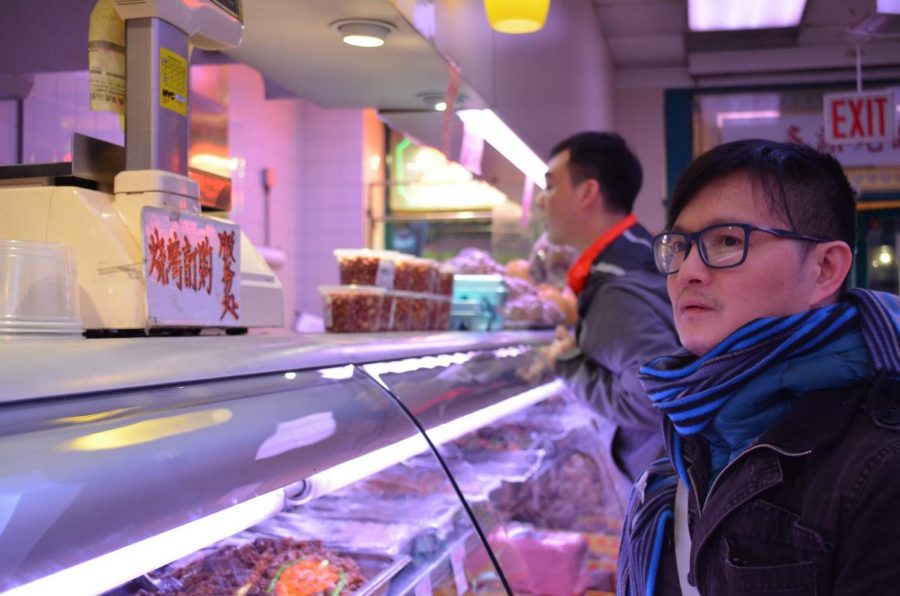The Dangers of Takeout For People Who Produce it, Cook it, Load it, and Deliver It to Others During the Coronavirus Pandemic
Like many families, my father chose to purchase our groceries at the local market in Chinatown, rather than buy them through online delivery services.
Countries and states are taking different initiatives towards mitigating the effects of the Coronavirus pandemic: each city has its own timeline. In Los Angeles, people are urged to stay home and avoid stepping out, even for groceries. Other places like Hong Kong and New Jersey are permitting people to sit in with about 50% of the maximum permitted number of people in restaurants or cafes. Meanwhile, New York only allows takeout.
But are we putting local businesses at risk by ordering their food, or are we supporting them?
“It’s crucial for local restaurants and businesses to offer take out, because it keeps them running throughout the pandemic and possibly after,” said Britney Ng ’20. Restaurant analysts evaluated that about 75% of small restaurants may fail to reopen after this pandemic. And so, “many restaurant owners cannot afford to temporarily close their food businesses,” said Ng. In addition, at the front of every chef and restaurateur’s mind is to rebuild the food industry to its prior state.
According to the New York Times, grocery sales are rapidly increasing and restaurant sales are plummeting. Since people are encouraged to stay at home and restaurants have closed, people have chosen to cook at home more, increasing the demand for groceries. Data from March 11 to March 18, 2020 shows that “grocery sales were up 79 percent from the previous years.” Online grocery delivery services have benefited the most during the pandemic. Meanwhile, most restaurants who offered dining-in options are suffering due to the practice of social-distancing and are even forced to close down. By restricting consumers from purchasing food from restaurants, it is triggering an economic crisis within the restaurant industry.
Over the course of years, delivery has developed through a wide variety of apps such as Postmates, GrubHub, Uber Eats, Caviar, and Instacart.
“In terms of the workers of these delivery services and employees of restaurants, they are placing themselves on the front lines of this pandemic on a daily basis while allowing people to shelter at home,” said Jenny Lin ’20.
Should we view ourselves as increasing the risk for workers by ordering food from restaurants or helping local businesses and “mom and pop” stores from shutting down?
The risk continues to grow for millions of workers who are already “underpaid and undervalued, uninsured and unemployed ” said Teja Rae, a writer for the New York Times. By traveling to multiple locations and forgoing delivery, delivery workers have a high risk of exposure and could transmit the virus to someone else. Major concerns regarding labor and public-health arose for workers at companies such as Amazon (which also owns Whole Foods) and Instacart. For one thing, many companies hire independent contractors who do not have flexible schedules and can not easily take paid sick leave. And so, even if they are not ill, workers could potentially spread COVID-19 in the process of working.
Workers responded with a strike in early May 2020, demanding for more sufficient and acceptable measures to protect themselves with equipment, cleaning services, and hazard pay. For now, some companies are creating relief funds to aid with Coronavirus-related medical payments for workers.
New regulations such as keeping six feet distance apart from each other and using gloves and masks at all times are enforced for restaurant employees, but not all restaurants follow them. Delivery services such as DoorDash have also added a required sanitizing routine as a response to the pandemic. Even so, many employees do not have a choice to stay at home because they need to obtain a source of income to feed their family, get health insurance, make their rent, and pay for expenditures. Therefore, some delivery workers have a positive view on more deliveries because it increases their wages.
Delivery and curbside pickups are safer for citizens compared to a consumer directly traveling to a restaurant or store because it exposes one to fewer people and greatly minimizes risk. This means there are less number of touch points in contrast to dining in a restaurant or personally getting groceries. Some people who have the luxury of staying home must consider whether to accept the “fair share of the collective risk” or pay a higher price for others to decrease the risk of going outside and coming into contact with others.
If you choose the option of delivery, you could repay the person who is delivering food to you. “A suggestion would be tipping the delivery worker more than you would usually do. Or even be more aware with your delivery service’s policies and help fight for worker’s safety,” said Ashley Chan ’20. If you choose to opt out from delivery and personally obtain groceries, it may heighten your own risk as well as others, so be sure to wear a mask at all times and wash your hands immediately when you return home and after you clean the surfaces of your groceries.

“In terms of the workers of these delivery services and employees of restaurants, they are placing themselves on the front lines of this pandemic on a daily basis while allowing people to shelter at home,” said Jenny Lin ’20.
Caitlin Yeung is an Online Newspaper Editor for ‘The Science Survey’ and a Group Section Reporter for ‘The Observatory.’ She finds the most appealing...











